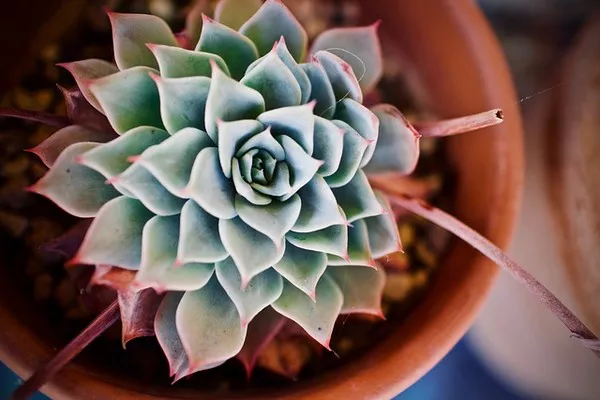Succulents, with their striking beauty and ability to thrive in arid environments, have become a popular choice among plant enthusiasts and home gardeners alike. These hardy plants are not only visually appealing but also fascinating in their ability to reproduce. Succulents employ various methods of reproduction, both sexual and asexual, which contribute to their resilience and diversity. In this article, we will delve into the captivating world of succulent reproduction, exploring the mechanisms and strategies these plants employ.
The Marvel of Asexual Reproduction
One of the most intriguing aspects of succulent reproduction is their proficiency in asexual reproduction, a mechanism that allows them to multiply without the need for pollination and seed formation. This process enables succulents to propagate quickly and efficiently. There are several methods of asexual reproduction employed by succulents, each with its own unique characteristics.
1. Offset and Pup Formation
Many succulent species, such as the Aloe, Haworthia, and Agave, produce offsets or pups. These are miniature plants that sprout at the base of the parent plant. These offsets are genetically identical to the parent plant and can be easily separated and transplanted to create new individual succulents. Offset formation is a common strategy among succulents and is particularly advantageous for gardeners who want to expand their collection.
2. Leaf Propagation
Leaf propagation is a widely recognized method in the succulent world. In this process, a leaf or leaf segment is removed from the parent plant and encouraged to form roots and grow into a new succulent. This technique works for various succulent species, including Echeveria, Sedum, and Graptopetalum. It involves selecting a healthy, mature leaf, allowing it to callus (a process where the cut end hardens), and then planting it in a suitable growing medium. Over time, the leaf will generate roots and eventually develop into a new succulent plant.
3. Stem Cuttings
Stem cuttings are another prevalent method for succulent propagation, especially in plants with fleshy stems like the Jade Plant (Crassula ovata) and the Snake Plant (Sansevieria). To propagate through stem cuttings, gardeners take a portion of the stem, typically several inches long, and plant it in well-draining soil. Roots will form from the cut end, and a new plant will emerge from the top. This technique is advantageous as it permits the propagation of large, mature succulents that may be challenging to reproduce by other methods.
4. Bulbils and Plantlets
Certain succulents, such as the Mother of Thousands (Kalanchoe daigremontiana), produce bulbils or plantlets along their leaves or stems. These small, plant-like structures develop independently and can be separated from the parent plant once they have roots. As they are already equipped with a root system, they can be directly potted, ensuring a seamless transition to independent growth.
Sexual Reproduction in Succulents
While asexual reproduction dominates the realm of succulents, sexual reproduction still plays a crucial role in their lifecycle. Sexual reproduction in succulents involves the formation of seeds, requiring pollination and fertilization processes. Here’s how it works:
1. Pollination
To initiate sexual reproduction, succulents rely on pollinators, such as bees, butterflies, and birds, which transfer pollen between flowers. This process typically involves the transfer of pollen from the male reproductive organs (stamens) of one flower to the female reproductive organs (pistils) of another flower. The success of this process depends on the presence of compatible plant species or individual plants within the same species.
2. Fertilization
Once pollination occurs, the pollen travels down the pistil to reach the ovules located in the ovary. Fertilization then takes place when the pollen joins with the ovule to form a zygote. This zygote will eventually develop into a seed.
3. Seed Development
Succulent seeds, like those of most plants, contain genetic material from both the parent plants. They may have unique characteristics and traits that differ from the parent plants. After fertilization, the ovary matures into a fruit that contains seeds. When the fruit ripens and opens, the seeds are dispersed into the environment through various methods, such as wind, water, or animals.
4. Seed Germination
Succulent seeds require specific conditions to germinate successfully. This typically involves exposure to moisture, suitable temperatures, and well-draining soil. Germination can vary between succulent species, with some seeds sprouting relatively quickly, while others may require more time and patience.
Hybridization and Genetic Variation
Succulent enthusiasts often engage in controlled breeding programs to create new succulent hybrids. These efforts can result in an array of unique and aesthetically appealing succulents that exhibit characteristics from both parent plants. Hybridization allows for the development of succulents with novel colors, shapes, and sizes, contributing to the diversity of these plants.
The Role of Chromosome Numbers
Understanding succulent reproduction also involves considering the role of chromosome numbers. Succulents exhibit various chromosome numbers, which can impact their ability to hybridize and reproduce sexually. For instance, some succulents may have uneven chromosome numbers, making successful hybridization with other species or cultivars more challenging. Nonetheless, skilled horticulturists have developed methods to overcome these obstacles and create new hybrids with unique traits.
Conclusion
The world of succulent reproduction is as diverse and captivating as the plants themselves. These resilient and unique plants employ a range of methods to propagate and ensure their survival. While asexual reproduction dominates due to its efficiency, sexual reproduction plays a vital role in maintaining genetic diversity and allowing succulents to adapt to changing environments. Whether you’re a seasoned succulent enthusiast or a beginner in the world of gardening, understanding the mechanisms of succulent reproduction can enhance your appreciation for these extraordinary plants. Succulents truly exemplify the beauty of nature’s creativity and adaptability.


